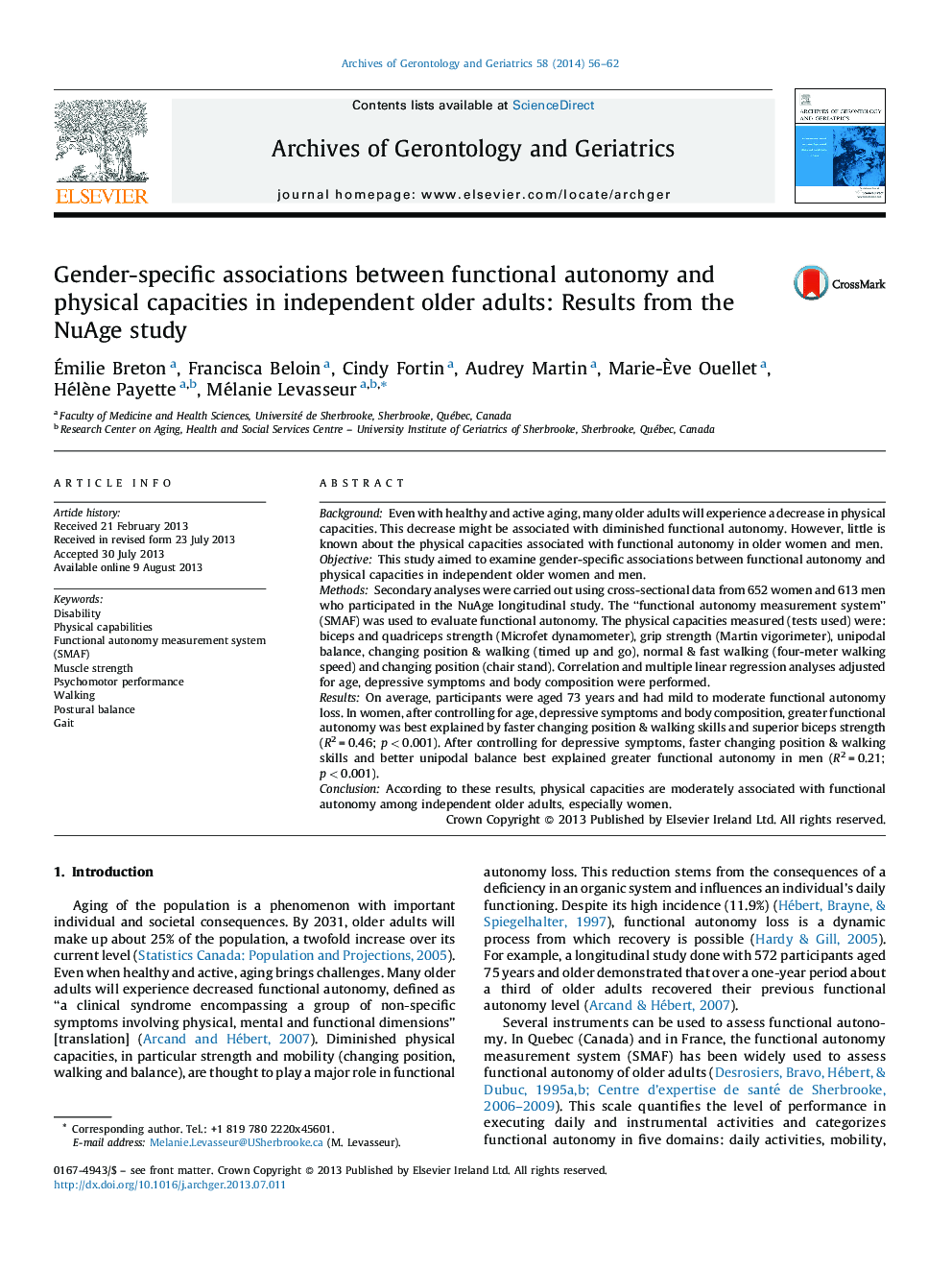| Article ID | Journal | Published Year | Pages | File Type |
|---|---|---|---|---|
| 1903292 | Archives of Gerontology and Geriatrics | 2014 | 7 Pages |
BackgroundEven with healthy and active aging, many older adults will experience a decrease in physical capacities. This decrease might be associated with diminished functional autonomy. However, little is known about the physical capacities associated with functional autonomy in older women and men.ObjectiveThis study aimed to examine gender-specific associations between functional autonomy and physical capacities in independent older women and men.MethodsSecondary analyses were carried out using cross-sectional data from 652 women and 613 men who participated in the NuAge longitudinal study. The “functional autonomy measurement system” (SMAF) was used to evaluate functional autonomy. The physical capacities measured (tests used) were: biceps and quadriceps strength (Microfet dynamometer), grip strength (Martin vigorimeter), unipodal balance, changing position & walking (timed up and go), normal & fast walking (four-meter walking speed) and changing position (chair stand). Correlation and multiple linear regression analyses adjusted for age, depressive symptoms and body composition were performed.ResultsOn average, participants were aged 73 years and had mild to moderate functional autonomy loss. In women, after controlling for age, depressive symptoms and body composition, greater functional autonomy was best explained by faster changing position & walking skills and superior biceps strength (R2 = 0.46; p < 0.001). After controlling for depressive symptoms, faster changing position & walking skills and better unipodal balance best explained greater functional autonomy in men (R2 = 0.21; p < 0.001).ConclusionAccording to these results, physical capacities are moderately associated with functional autonomy among independent older adults, especially women.
